I try to avoid malapropisms when describing the flavor of a wine, but I'm starting to feel that it's not possible. A quick perusal of a famous magazine's online review section provided these descriptive gems: "has guts, cherry-cola, modest toast, clean, vibrant, modulated, bright, slate, nervy, generous, supple, focused, wrapped, open, sinewy, firm, fleshes out, round, balanced, racy, solid, light, unadorned, lean, refined". If you combine them appropriately you get a wine with personality worthy of clinical study -
This supple and focused vintage is sinewy, but fleshes out into a racy light and lean yet generous concoction.
I bring this up because I feel that my reviews of Amador County wines are a bit... lacking in descriptive power. There are only so many ways you can say sweet, acidic, tart, tannic or oaky before you begin repeating yourself. Without resorting to interesting metaphors it's hard to describe the difference between a Cooper and a Sobon, or between a Zinfandel and a Syrah, yet the tongue can immediately tell them apart. My future plans for WineGeek include a compiled review section which will inevitably include some sort of point scale or stars or some other metric to sum up my opinion. I simply don't have the vocabulary to successfully describe things and will have to resort to some sort of system like this.
So forgive me if I start sounding too much like a wine advertisement; it's not for lack of trying.
To wrap up my experiences in Amador I'll briefly mention the visits to
Dobra,
Deaver,
Renwood,
Montevina,
Nine Gables and
Kelson Creek. I'll start with the story of how we eventually found my favorite winery of the trip, Dobra, after a lot of muddling around.
As we drove slowly along Steiner Road returning from Sobon we saw the small sign for Dobra Winery and made a quick turn into an unpaved driveway. Immediately the driveway branched into two unmarked sections, one heading downhill and the other up. Neither looked very inviting so the rental car was turned around and put back onto the main road. The next tasting room was Charles Spinetta which I thought was more interesting for the upstairs art showroom than for the wines. Deaver followed this one. Deaver had quality product in various forms and a friendly, informative staff. They had the best gift shop of the wineries we visited. It was almost entirely filled with wine paraphenalia and cute wine and cooking slogan-covered goods. Pithy wisdom such as "Life is a Cabernet" and "Got Wine" can be found here on napkins, aprons, tablecloths, desk miniatures, fridge magnets and so on and so forth. From the staff at Deaver we got directions to Dobra and were encouraged to visit.
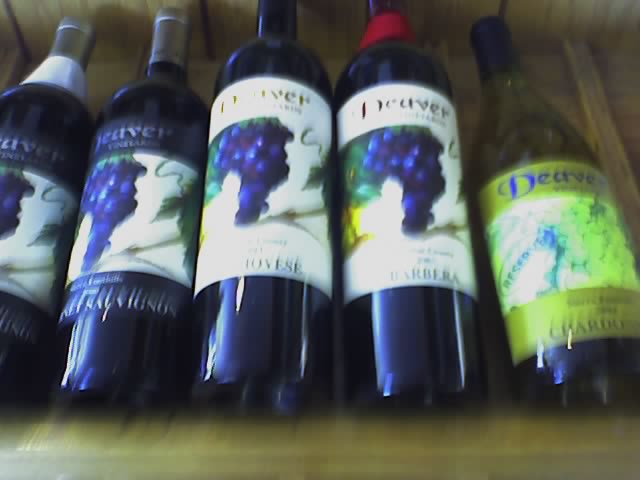
This is one of the best things about Amador County. Several natives to the area and also some who work in the wine trade told me that Amador is like Napa was about 20 years ago. This doesn't just mean that the tastings are free - which they are, unlike Napa. It means that a lot of the wineries still have the feeling that the owner would be perfectly happy as an amateur hobbiest selling home-made products out of their garage. The staff at Deaver was eager for us to find Dobra and try the wines there because they thought the wine was good and that they should succeed. This is the sentiment of someone that really loves what they do first, and is running a business second.
With appropriate directions we made it to Dobra. In order to get there you take the right fork of the unpaved road, cross the stream (it helps to have a jeep here) and ascend a tall hill until a set of buildings and trees come into view. Once you get to the winery grounds they are quite nice though little space has been set aside for visitors wanting to picnic or hang about drinking wine. A shirtless white-haired gentleman with large mustaches was driving a forklift as we pulled up. Seeing us he grabbed his shirt (plaid) and headed into the tasting room, a dark and barrel-filled barn/cave stocked with a cash register, a blackboard with prices, and not much else. This gentleman was of course Milan Matulich, the owner and chief winemaker of Dobra Winery. Mr. Matulich is an immigrant from Croatia and makes wines from Amador grapes in a style similar to those from his country of origin. I found these Zinfandels and other varietals (a Syrah and a blended table wine) to be very interesting and quite good. They don't have the up-front sweetness I found in the other Zinfandels, instead having far stronger spicy and peppery flavors. According to my handy pamphlet "Zinfandel: America's Heritage Wine" this is probably due to picking the grapes earlier rather than later. However he did it Mr. Dobra really succeeded and I bought a number of bottles. This is one that you won't find in Total Wine. From here on out my wife was a bit tipsy and it's easy to see why - the A.B.V. of the
Syrah at Dobra is 16.5% (the highest I've ever seen) and the Zinfandel is 16.1%. Very, very high alcohol content for wine. I'll do an in-depth review of Dobra when I open one of the bottles I brought home.
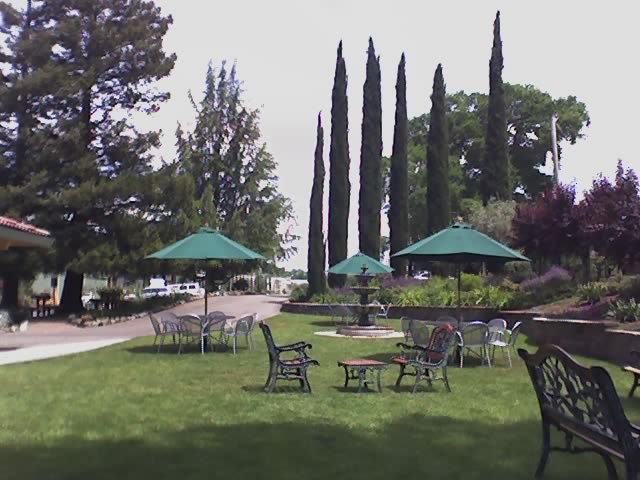
Renwood was the largest of the tasting rooms we visited and we were happy to see that they sell cold cuts and cheeses along with bottled water and crackers. We had a small picnic here (a wine-tasting tradition) and relaxed a bit. I found the Renwood wines to be pretty forgetable, but the staff was friendly and it's worth a visit anyway.
After Renwood we tried Montevina (available at Total Wine) which I liked. I bought their last bottle of 2002 Syrah which has a remarkable herbal flavor, with thyme and sage as well as blackberry flavors. Beyond Montevina was Kelson Creek, a tiny winery with a nice Koi pond in the back. The tasting room at Kelson Creek is jarringly decorated in a style reminiscent of a sports bar. My wife enjoyed their almond sparkling wine although I didn't care for it. I found the wine ok - not worth a purchase. They distribute online through their wine club. Last but not least was Nine Gables.
The Nine Gables tasting room is laden with several layers of kitsch, balloons and other country garden style artifacts. Inside we met the chief winemaker who is the son of the owner/founder. Nine Gables is interesting due to their Mission and Primativo wines. Mission I mentioned before; it's the very old varietal brought to California with the Spanish missionaries in the 18th century. Primativo is a clone of Zinfandel (maybe, they argue about the exact origin) with a strikingly different flavor. I was happy to sample these unusual wines at Nine Gables because it's doubtful I'll ever try them again. It was disappointing that I found all of the wine there had a flavor which I simply don't like. It reminded me of wines from Santa Barbara more than a decade ago and is something I can't quite put my finger on. "Pencil Box" is a flavor description I noticed on a tasting chart that was present at the bar and this is the closest flavor description I've been able to make. My wife didn't find this an issue at all and thoroughly enjoyed the wines - though by this time she was
definitely tipsy.
That wraps up my Amador adventure! To finish everything off I'll post my notes on tasting the 2003 Sobon Estate Rezerve Zinfandel, Paul's Vineyard. This is the most expensive of the Sobon Zinfandels and honestly I don't think it's worth it. I always hate to dis a wine but this one just doesn't live up to my expectations. The nose is mild with old sawdust, grassy and slight alcohol scents. In color it's a reddish-purple, a bit murky. I detect a distinct musty taste that would make me think this bottle is corked if I hadn't tasted the same thing at the estate itself. There is a definite note of "pencil box" in this one, a woody flavor that persists from beginning to end. I expect that a lot of people will like that though I'm not one of them. The mouthfeel is good (it's not too watery) and there's some intriguing cherry licorice flavors that seem to be struggling to get free but overall I'm just not enjoying the wine very much. I recommend Sobon's standard label (and much cheaper) Zinfandels over this particular vintage.
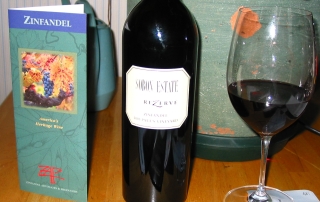
Coming very soon I have my first request review and the continuation of my search for a good wine under $10. Until then!
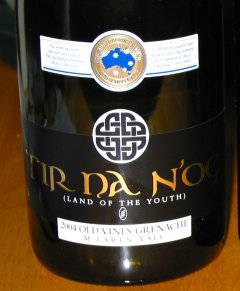
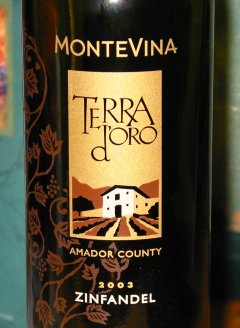
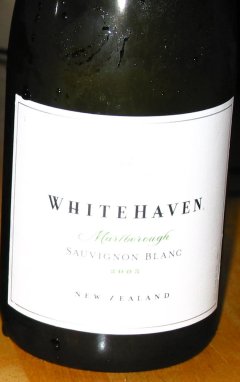 The wine was decent, strong overtones of grapefruit and sour apple weren't spoilt by bitterness or buttery flavors. Unfortunately it didn't stand up well to the assortment of foods we were eating. I brought out the
The wine was decent, strong overtones of grapefruit and sour apple weren't spoilt by bitterness or buttery flavors. Unfortunately it didn't stand up well to the assortment of foods we were eating. I brought out the 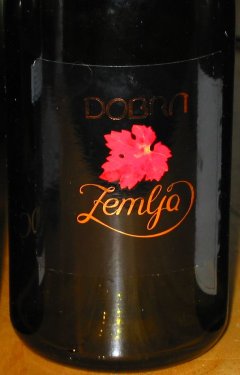 2003 Dobra Amador Syrah I picked up at Dobra (the winery we couldn't find at first) and pretty much everyone was very impressed. The wine had enormous fruit flavors balanced with pepper and earthy undertones, great aroma and character in the glass. It sounds a bit overpowering yet despite all the flavor it was amazingly easy to drink. Myself, BrewGal and BrewGuy finished it off quickly with a little help from guests. I was instructed to go find a case of this wine; I'll do my best, maybe they take phone orders.
2003 Dobra Amador Syrah I picked up at Dobra (the winery we couldn't find at first) and pretty much everyone was very impressed. The wine had enormous fruit flavors balanced with pepper and earthy undertones, great aroma and character in the glass. It sounds a bit overpowering yet despite all the flavor it was amazingly easy to drink. Myself, BrewGal and BrewGuy finished it off quickly with a little help from guests. I was instructed to go find a case of this wine; I'll do my best, maybe they take phone orders.
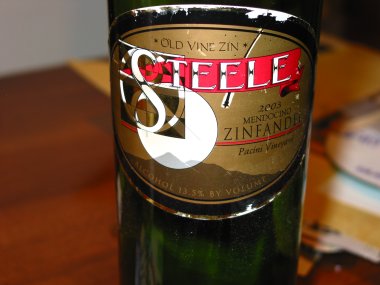
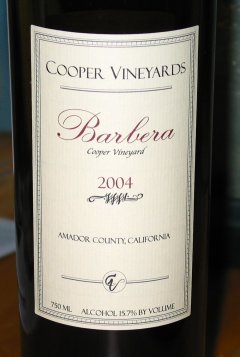
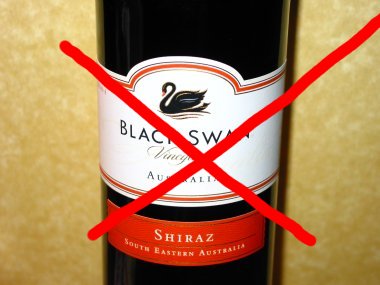
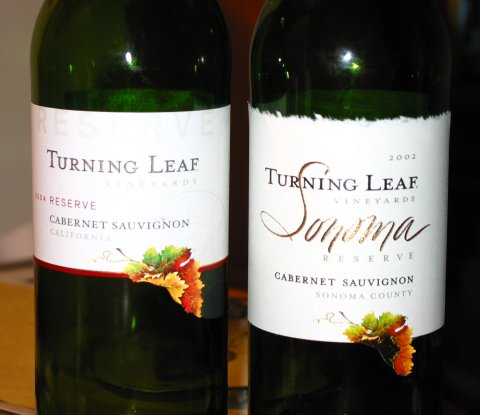



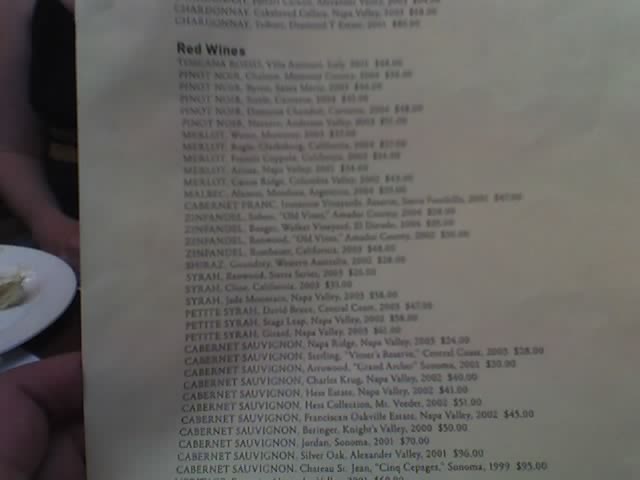 I thought the Steele was an excellent wine and a good purchase even considering the restaurant markup ($45). The aroma is powerful, fruity and fragrant; it had great fruit flavor reminiscent of both cherry and strawberry/blackberry that isn't too sweet; it is tannic enough to feel full and balanced with a nice aftertaste. I rank this up there with the Esterlina Russian River Pinot I reviewed a few weeks ago.
I thought the Steele was an excellent wine and a good purchase even considering the restaurant markup ($45). The aroma is powerful, fruity and fragrant; it had great fruit flavor reminiscent of both cherry and strawberry/blackberry that isn't too sweet; it is tannic enough to feel full and balanced with a nice aftertaste. I rank this up there with the Esterlina Russian River Pinot I reviewed a few weeks ago. 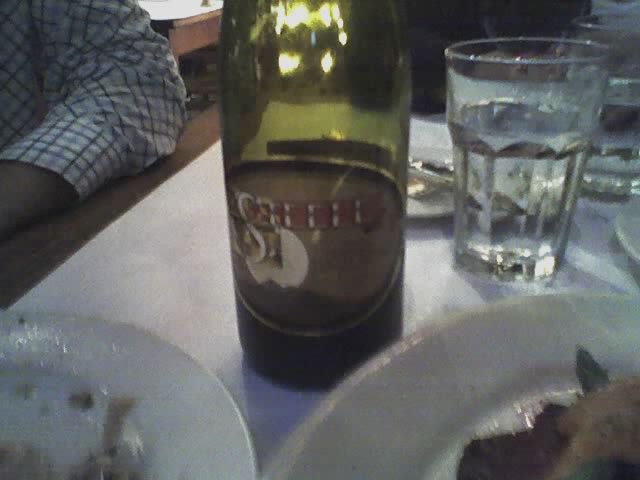
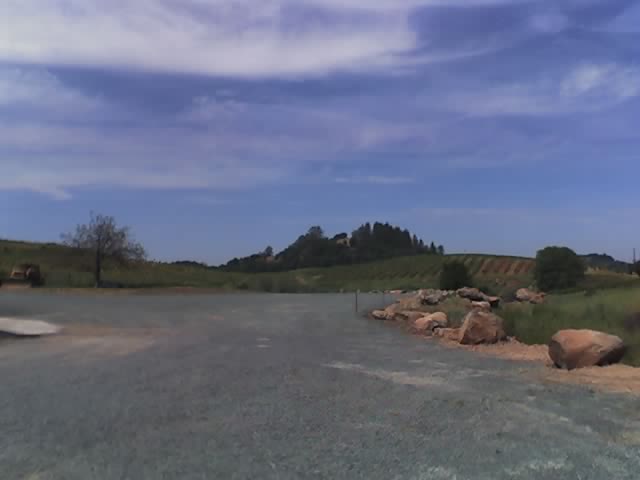 Of the Sobon wines I tried at the winery I enjoyed the Cab-Shiraz blend the most. I believe this is a matter of style and not quality. The Cabernet grape adds a great layer of flavor and body on top of anything and the Shiraz adds interesting notes to the mix. Cabernet does grow in Amador county but it's a very different sort of flavor than what you get out of Napa, being much less fruity and more "severe" if you'll pardon my adjectives. I encourage you to try both out and taste the difference for yourself; good examples of Napa and Amador Cabernet can be had for around $13.
Of the Sobon wines I tried at the winery I enjoyed the Cab-Shiraz blend the most. I believe this is a matter of style and not quality. The Cabernet grape adds a great layer of flavor and body on top of anything and the Shiraz adds interesting notes to the mix. Cabernet does grow in Amador county but it's a very different sort of flavor than what you get out of Napa, being much less fruity and more "severe" if you'll pardon my adjectives. I encourage you to try both out and taste the difference for yourself; good examples of Napa and Amador Cabernet can be had for around $13.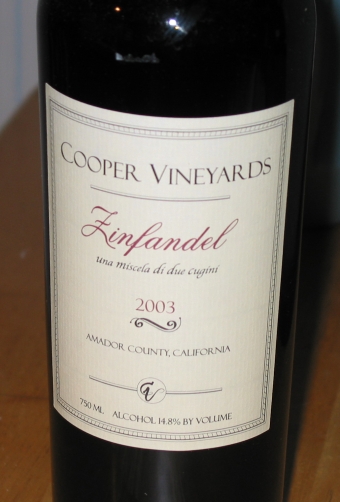
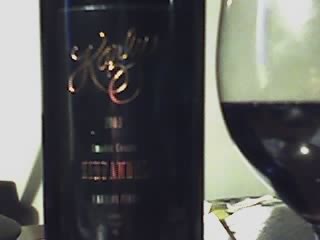
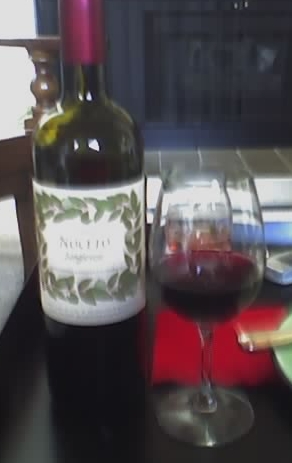 To sum up - hot and dry climate, old vines from Italy and Austria/Croatia. To finish this evening's post I'll describe the Noceto and Singleleaf.
To sum up - hot and dry climate, old vines from Italy and Austria/Croatia. To finish this evening's post I'll describe the Noceto and Singleleaf. 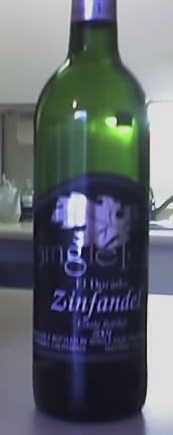 The Singleleaf was a more herbal and tannic example of Zinfandel than some I tried (for example Sobon Estate Rocky Top) but had good balance. To me Zinfandel has a very distinct flavor. The tip of the tongue will receive a very sweet almost sugar-like flavor while the sides of the tongue get a strong dose of acidity and mouth-drying tannins. All sorts of other flavors are intertwined with this baseline including earthy or mineral tastes, herbal, woody, etc. The smell can often contain distinct notes of alcohol but will also contain cassis or other berry aromas as well. Zinfandels tend to have a high alcohol content (due to the high sugar levels) compared to other wines, up to 20% more.
The Singleleaf was a more herbal and tannic example of Zinfandel than some I tried (for example Sobon Estate Rocky Top) but had good balance. To me Zinfandel has a very distinct flavor. The tip of the tongue will receive a very sweet almost sugar-like flavor while the sides of the tongue get a strong dose of acidity and mouth-drying tannins. All sorts of other flavors are intertwined with this baseline including earthy or mineral tastes, herbal, woody, etc. The smell can often contain distinct notes of alcohol but will also contain cassis or other berry aromas as well. Zinfandels tend to have a high alcohol content (due to the high sugar levels) compared to other wines, up to 20% more.
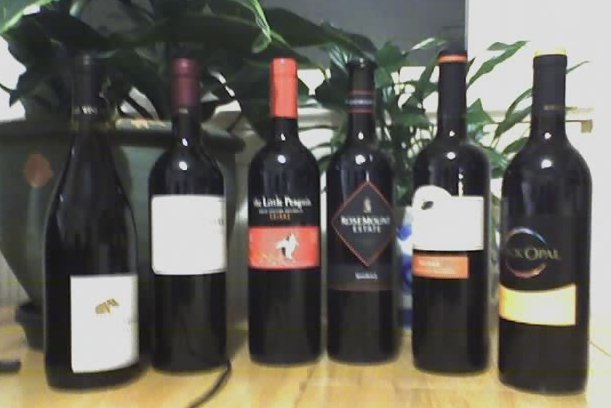
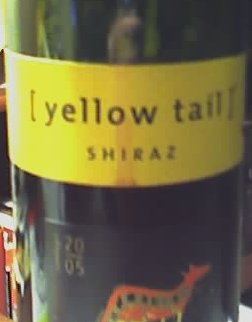 has a nice color the aroma leaves something to be desired. Some fruit elements are there but also something else that I find unpleasant, a raw and almost chemical smell. It has a medium-sweet flavor with an interesting vanilla-tinge but not much else. The finish is quick - too quick. Within seconds you can't really tell you've had a glass at all. It goes down easy, but doesn't leave much of a memory.
has a nice color the aroma leaves something to be desired. Some fruit elements are there but also something else that I find unpleasant, a raw and almost chemical smell. It has a medium-sweet flavor with an interesting vanilla-tinge but not much else. The finish is quick - too quick. Within seconds you can't really tell you've had a glass at all. It goes down easy, but doesn't leave much of a memory. 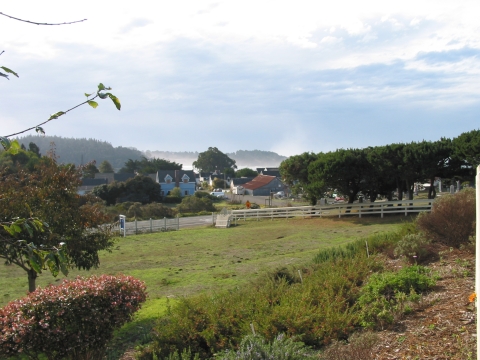
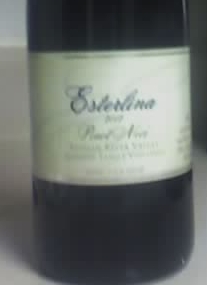 Right away I knew that this was the right one. The aroma is powerful, containing hints of apricot and date as well as the distinctive smell of the Pinot grape. The wine has a garnet color (purplish red) with a hint of rust. If you look closely in the glass you'll see a rim of light pink; I'll talk some more about the importance of this in another review. The actual taste is delicious with full fruit, a bit of raisin flavor and a tart finish; not too sweet or overwhelming. There's just enough oak there to give it some character. I really enjoy the wine and I'd have absolutely no problem serving this to company or on a special occassion.
Right away I knew that this was the right one. The aroma is powerful, containing hints of apricot and date as well as the distinctive smell of the Pinot grape. The wine has a garnet color (purplish red) with a hint of rust. If you look closely in the glass you'll see a rim of light pink; I'll talk some more about the importance of this in another review. The actual taste is delicious with full fruit, a bit of raisin flavor and a tart finish; not too sweet or overwhelming. There's just enough oak there to give it some character. I really enjoy the wine and I'd have absolutely no problem serving this to company or on a special occassion.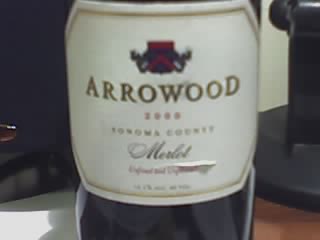 for about $15 at Costco last week.
for about $15 at Costco last week.